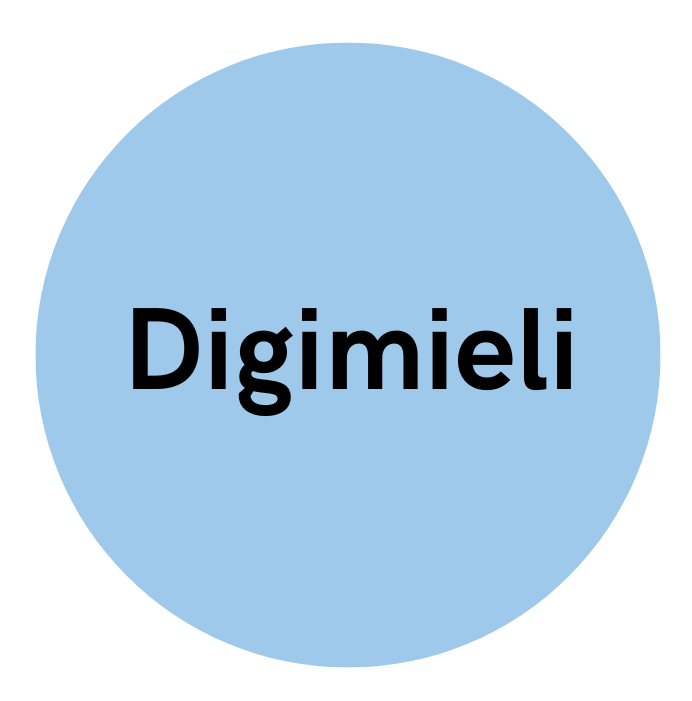2nd week: anxiety and breathing
Before delving into the next subject, take a moment to return to last week’s exercise and get acquainted with new breathing exercises.
You can check in the monitoring form how much you practised last week. If you have not yet managed to start practising, do not worry. It is not too late to start.
Previous week’s exercises
How many times did you practise
– belly breathing
– activating the vagus nerve by humming, singing, making the ‘ng’ sound or gurgling?
What other exercises and things did you do over the past week to regulate your anxiety or take care of your wellbeing in general?
Return to the ‘Intensity of anxiety and selection of methods’ form. In what kind of an emotional state could belly breathing or vagus nerve activation help you?
Are you planning to do these exercises in the future? How well do you find them to alleviate your anxiety symptoms or maintain your wellbeing?
Continuing breathing exercises
Next, you will get to try out new breathing exercises. It is important that you try them with curiosity and an open mind. Sometimes, the most unpleasant exercise can be the most beneficial in the long run. So keep doing the exercises tenaciously.
You will need around 10–15 minutes for concentrating on the exercises undisturbed. For bottle blowing, you will need a piece of tubing or a straw and a bottle half-filled with water.
Bottle blowing
Bottle blowing will prepare you for pursed lip breathing. Keep blowing into a bottle over seven days and then move on to pursed lip breathing. If you do not have the items needed for bottle blowing, you can go straight to practising pursed lip breathing.
Pursed lip breathing
Pursed lip breathing is a very useful breathing exercise that will automatically lengthen your exhalation. You can make the exercise even more effective than in the video by making the gap between your lips even narrower. That way, your breathing will barely make a sound and you release very little air at a time. Pursed lip breathing serves as the basis for breathing exercises introduced later in the programme.
Contemplate: How did the exercises above feel? Did they affect your emotional state? What about your bodily sensations? How could continuing the exercise help you with regulating your anxiety or maintaining your wellbeing?
Breathing connects the body and the mind
Anxiety affects our breathing – and the way we breathe can either increase and maintain anxiety symptoms or alleviate them. In the video below, physiotherapist Sari Lamio talks about how breathing is connected to anxiety.
Breathing and anxiety symptoms
Anxiety is a psychological and physical stress situation. In a stress situation, our breathing intensifies as our body prepares for physical exertion (fighting or fleeing). If no physical exertion takes place, our breathing is more intense than our body needs at the moment.
Such excessive breathing is called hyperventilation. Hyperventilation can be the result of breathing too deeply or rapidly. In a stressful situation, a person may gasp for air or breathe faster than needed without realising it.
Hyperventilation causes the carbon dioxide content of blood to decrease. This can cause tingling of the limbs, dizziness, an irregular heart rate, muscle cramps, fainting and anxiety.
Hypoventilation, i.e. breathing too shallowly or slowly, can also cause symptoms. Hypoventilation causes the carbon dioxide content of blood to increase, leading to shortness of breath, headaches and disorientation. Blushing, an elevated heart rate, muscle twitches or, in extreme cases, spasms, loss of consciousness or panic attacks can also be the result of hypoventilation.
The activity of the autonomic nervous system regulates our breathing – and we can use breathing to regulate the activity of the autonomic nervous system.
During inhalation, the sympathetic nervous system is active. As such, if you need to raise your level of alertness, you should emphasise your inhales. For example, when you are feeling sleepy, tired or fatigued, you can try inhaling intensely a few times. However, excessively intense inhalation can cause you to hyperventilate and even bring about a panic attack, so you should limit the number of repetitions.
In turn, during exhalation the parasympathetic nervous system is active. Lengthened exhalation is an effective way to regulate anxiety. As a rule of thumb in any breathing exercise intended to calm you down, you should make your exhales 2–3 times longer than your inhales.
Try this: Breathe for three minutes by exhaling through your mouth while counting to six and inhaling through your nose while counting to three. The idea is not to empty your lungs by force. If you notice that you are tensing your diaphragm after the exercise, you should start with slightly shorter exhales. After a long and unforced exhale, you can try to pay attention to the pause between your breaths and rest in the sensation of your diaphragm being calm.
Exercises for the week:
The videos and texts of this section have now provided you with information about how breathing and anxiety are connected and how breathing can be utilised in anxiety regulation. This week, you were given new breathing exercises that you should take time to practise for roughly five minutes every day.
- Bottle blowing
- Pursed lip breathing
- Lengthening your exhalation
